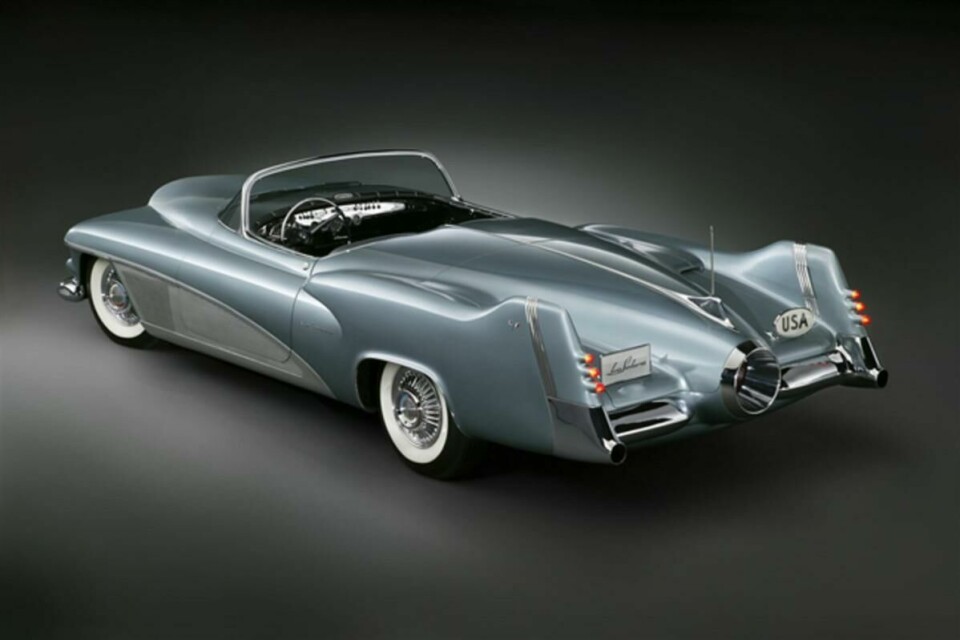
Concept Car of the Week: GM LeSabre (1951)
The car that defined auto design in the 1950s in America was the General Motors LeSabre of 1951. Conceived by the flamboyant GM design chief Harley Earl, it was meant to set out the programme for the cars of the new rocket age
Some cars are destined to define a decade. In the US, the Ford Model T defined the 1910s and 1920s, the Willys Jeep the 1940s, and the Ford Mustang the 1960s. These designations are usually made in hindsight, and are often the subject of considerable debate. And, of course, in Europe and elsewhere, the cars selected would be different.
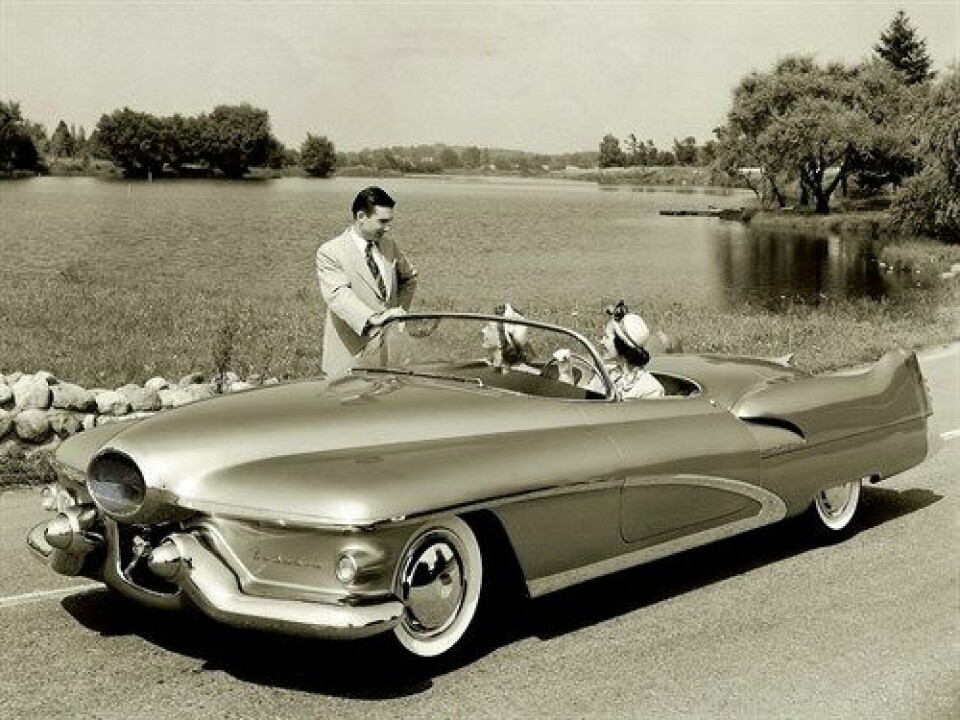
The car that defined auto design in the 1950s in America was the General Motors LeSabre of 1951. Conceived by the flamboyant GM design chief Harley Earl, it was meant to set out the programme for the cars of the new rocket age.
Earl had conceived of the idea several years before, while still driving his iconic 1938 Buick Y Job. In a 1946 meeting with Harold Curtice, chief of Buick at the time, there was mention of retiring the Y Job and creating a new ‘halo car’ for for the brand. Earl, never one to miss an opportunity, convinced Curtice to build two cars: the XP-8 which would emphasise styling, and the XP-9, which would focus on engineering and be completed under the leadership of Buick’s senior engineer Charles Chayne. The two cars were developed in tandem over the next few years at the then-astronomical cost of a million dollars (roughly 20 million in today’s dollars)
The XP-9 would become the Buick XP-300, a sporty roadster that resembled a sleek extension of the early 1950s styling themes but with an emphasis on Buick’s future identity. The XP-8 would become the LeSabre, Earl’s personal car for a while, and a statement about where GM styling would be going in the new decade.
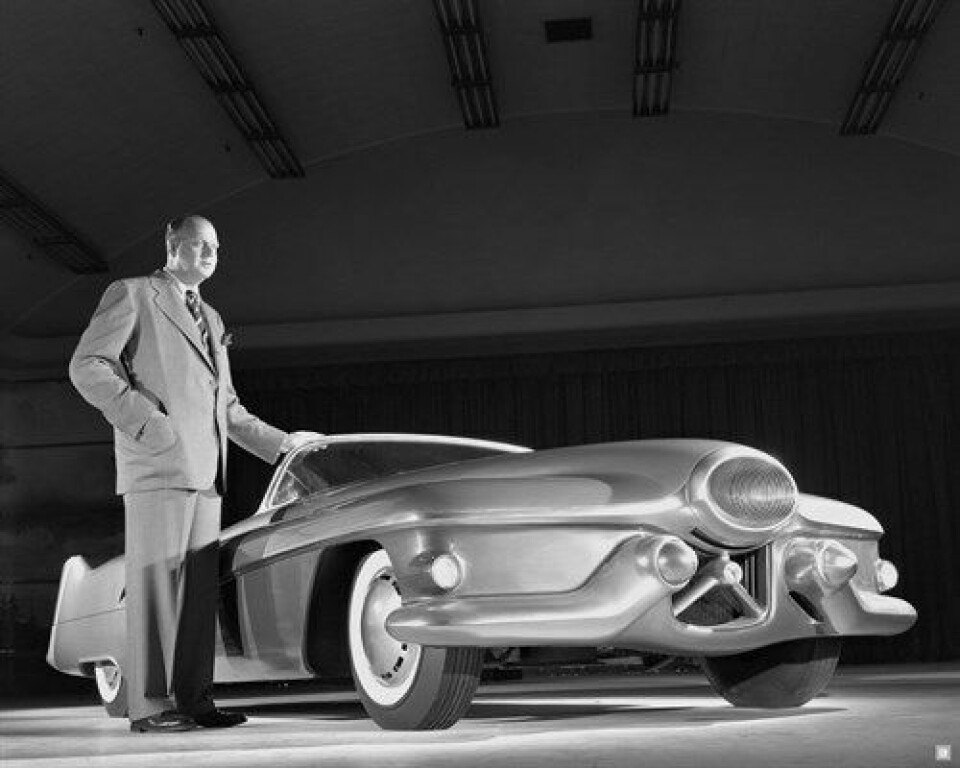
Harley Earl and the concept model
Harley Earl was a great bear of a man: nearly two meters tall and built like a linebacker (fullback, if you’re into rugby). The LeSabre was thus just as long and wide as Earl was tall. It was not a light, nimble roadster for touring the English countryside or snaking through the Alps; the LeSabre was built to be seen blasting down Woodward Avenue in Detroit, a full-blown boulevard cruiser like the Y Job before it.
It also heralded designs to come: massive proportions, acres of chrome, buxom ‘Dagmars’ (projections nicknamed after a popular, curvaceous actress of the time) at the front bumpers, and aircraft/rocketship styling themes throughout, echoing its muse, the F-86 Sabre jet fighter, from the jet-like snout at the front to the flame-spitting tail fins at the rear.
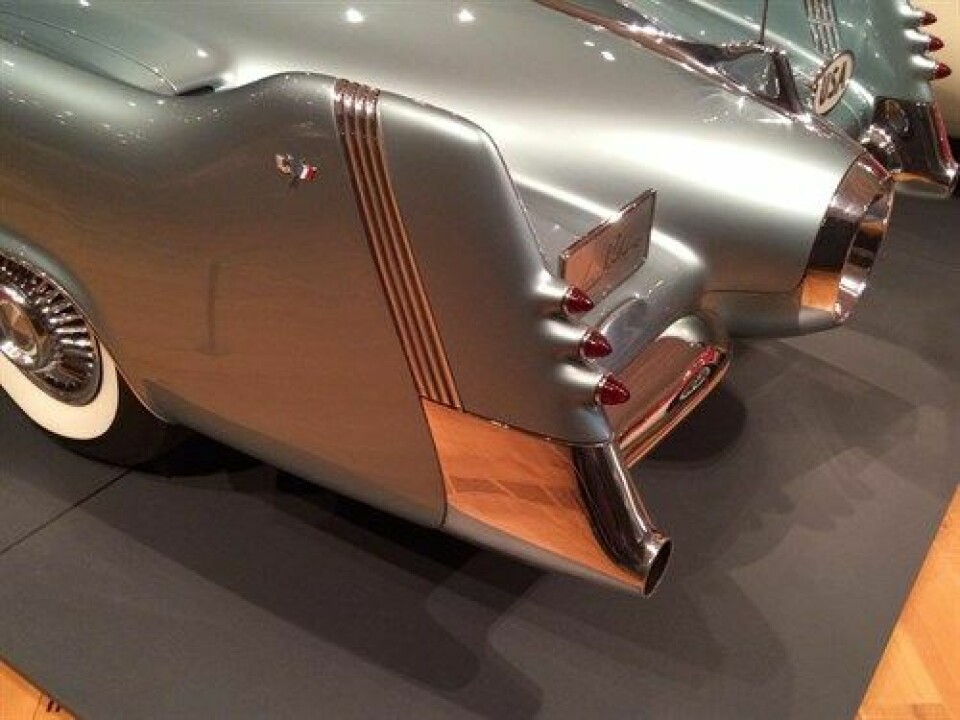
Yet despite its immense size, the LeSabre concept was only a two-seater - one more seat than Earl needed, as it was always his show when he was in the car. Indeed, the seat and the steering wheel were set in place for Earl himself and were not adjustable.
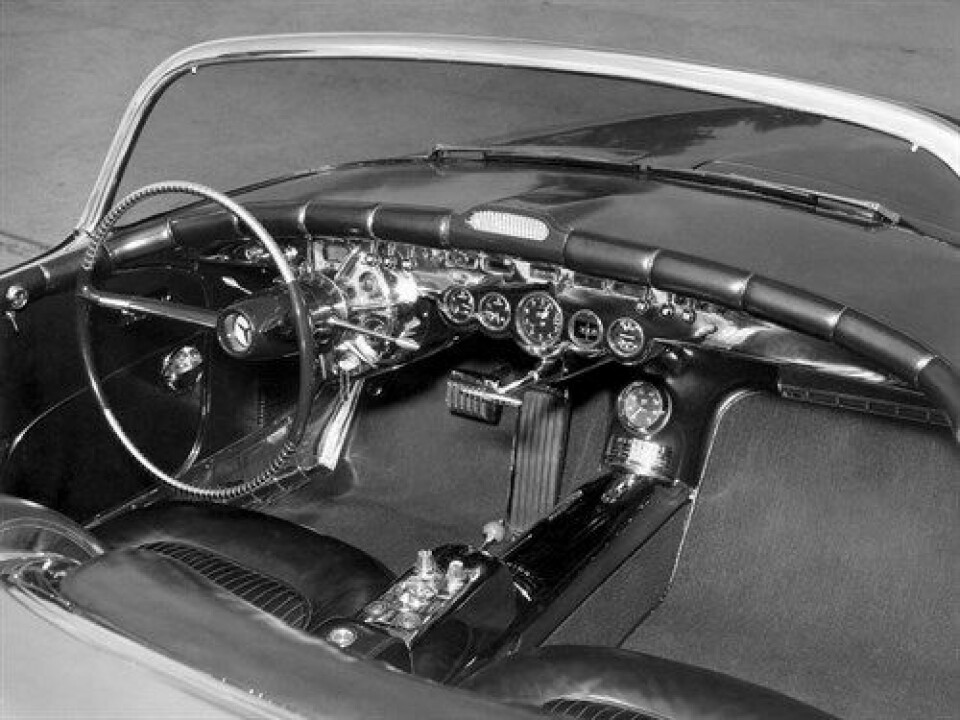
The remainder of the interior was like that of a fighter jet. Multiple banks of dials and gauges surrounded the steering column and across the instrument panel. The rear-view mirror was integrated into the cowl of the IP, so as not to disturb the sculptural beauty of the wraparound windshield, the first of its kind, and this destined for production a few years later. The windshield alone was a costly addition to the car, but had been on Earl’s wish list for a long time.

Exterior styling, by Earl with legendary GM designer Edward Glowacke, was a mash-up of rocket, jet fighter, and racing car themes, many found in other cars of the period, but brought together here in a bold new expression. The most prominent feature of the front was the ‘kiss-mouth’ grille that projected from the hood. Emulating the turbine jet intake of the F-86, the LeSabre’s grille actually hid a pair of headlights that swivelled into place when the switch was pressed. Below the grille was the pair of Dagmars, another Earl innovation that appeared on the 1948 Cadillac.
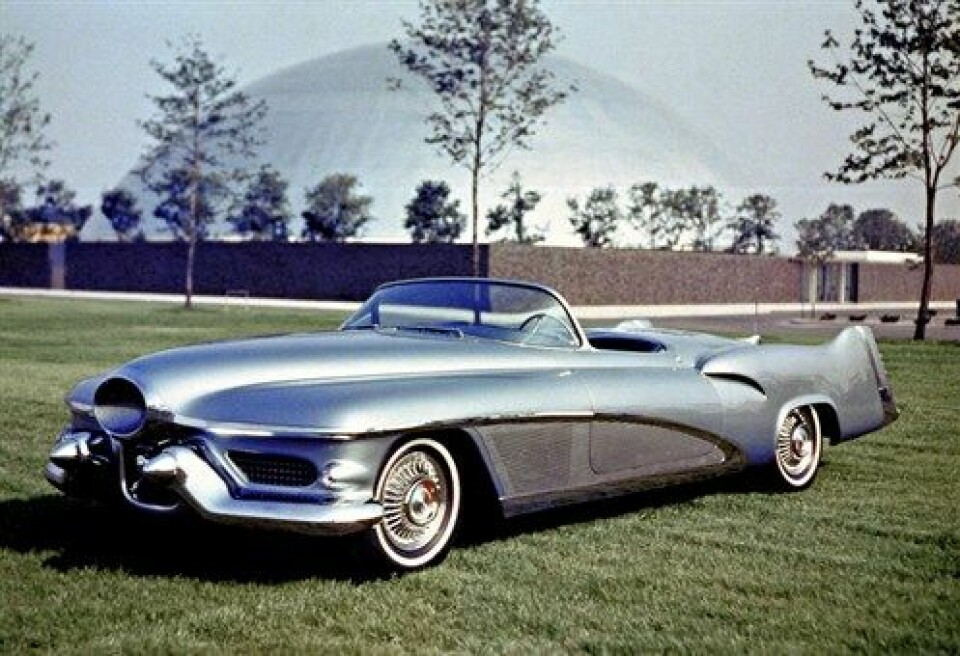
Along the side of the LeSabre, one can appreciate the great length and low stance, enhanced by the great sweep of chrome stretching along the flank behind the front wheels. And, of course, the side composition terminates in the great upsweep of the tail fins.
Tail fins were another Earl invention, as he admired the beautiful twin-boomed Lockheed P-38 Lightning fighter that was so devastatingly effective in World War II. He had managed to incorporate fins into the 1948 Cadillac’s design (over top management’s objections). But earlier tail fins were only minor terminals in the overall composition of the design: on the LeSabre, they were an announcement to the world that the tail fin was to be a major design element of the car of the future, not just a little nub at the end of a fender. And between its enormous fins was a circular terminus that emulated the exhaust of a jet fighter, here containing a large taillight.
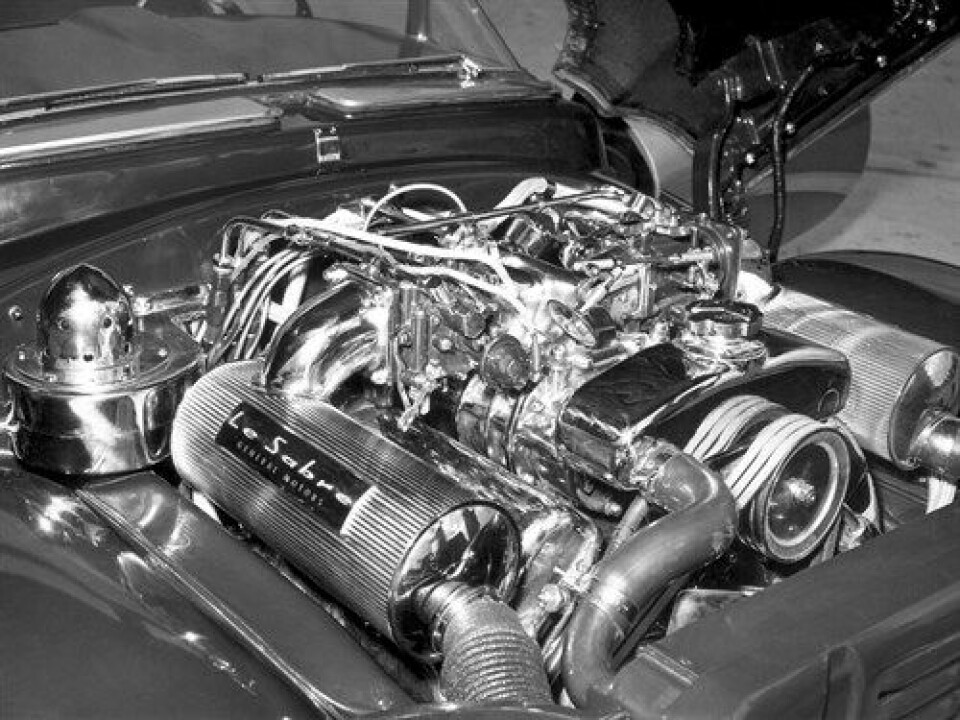
The LeSabre was powered by a 225 cubic-inch aluminum block V8 with two superchargers. It achieved 335 hp, far ahead of its nearest passenger car competitor, the Chrysler Hemi, rated at 180 hp. But the LeSabre’s engine was a bit of a fragile hothouse orchid, and had an unfortunate tendency to overheat - especially when Earl was at the wheel.
It went on to tour with GM’s Motorama show and was displayed at the Paris auto show, and after several more appearances, was consigned to daily service as Earl’s personal car. Its flamboyant presence perfectly matched its driver and it was a great showcase for GM design.
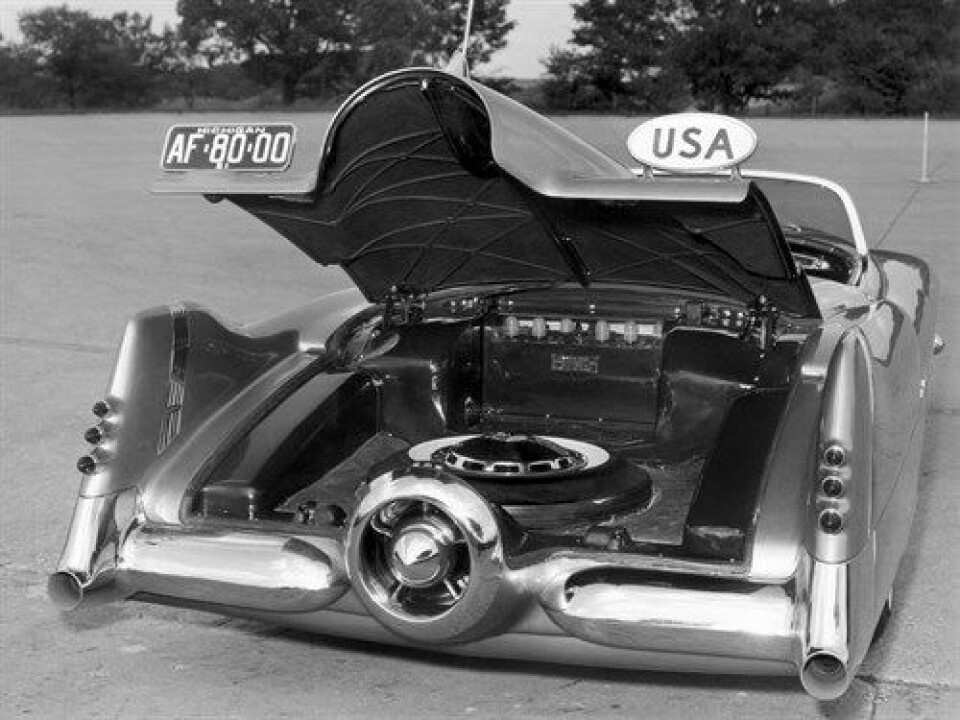
Harley Earl enjoyed an outsized presence in Detroit in the 1950s, and retired in 1958 having overseen the design of the last and most flamboyant tail fin-era cars, the 1959 designs including the Cadillac Coupe DeVille and the bat-winged Chevrolet Bel Air. The LeSabre name made its introduction that year on a production Buick.
The LeSabre concept still tours on occasions, and is a reminder that a design can not only sum up an era, but predict it as well. It is a good lesson for contemporary designers to keep in mind as we enter a new era of highly automated and connected cars.
GM LeSabre (1951)
Length: 200.9 in/5105 mm
Width: 76.8 in/1951 mm
Height: 50 in/1270 mm
Wheelbase: 115 in/2921 mm
Front track: 58 in/1473 mm
Rear track: 60 in/1524 mm
Weight: 3800lbs /1728 kg
Engine: 215 cu. inch (3.52 litre) cast aluminum V8 with superchargers, 335 hp (250 kW)
Body/frame: cast magnesium with honeycombed aluminum floor plates and steel panels over box section steel frame with a central X-member.



